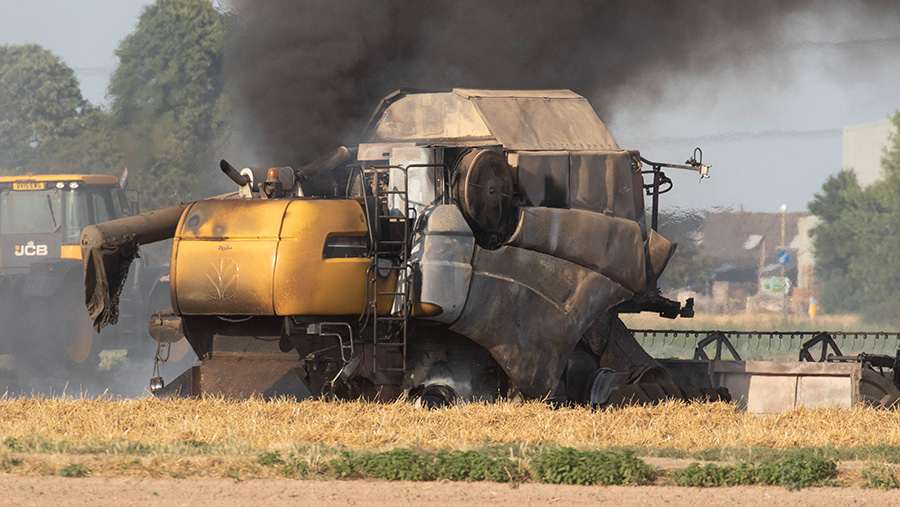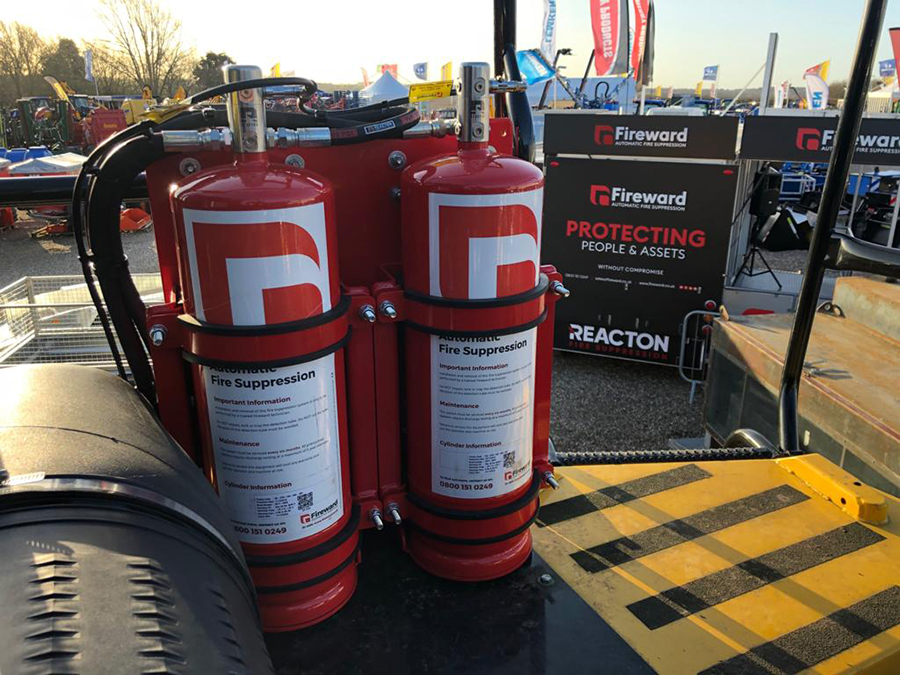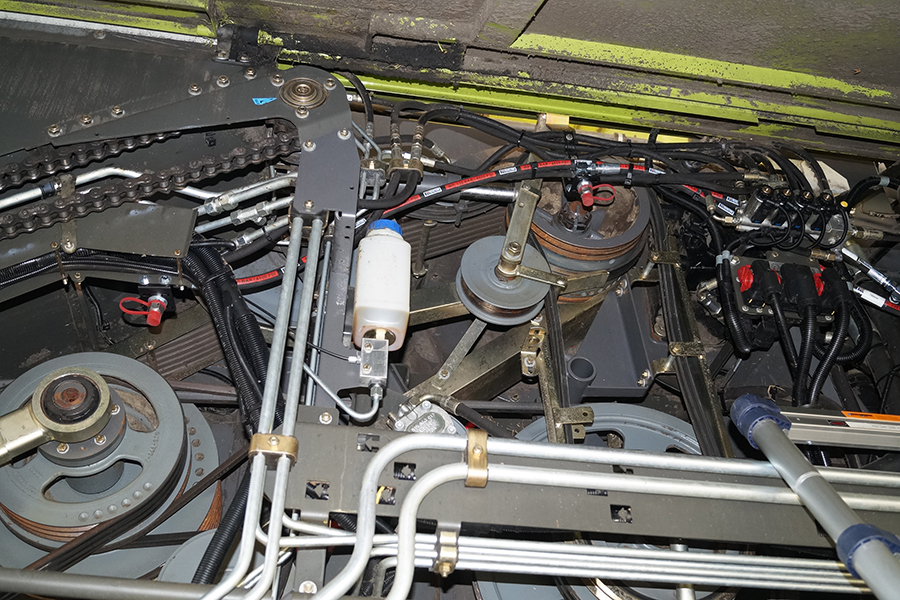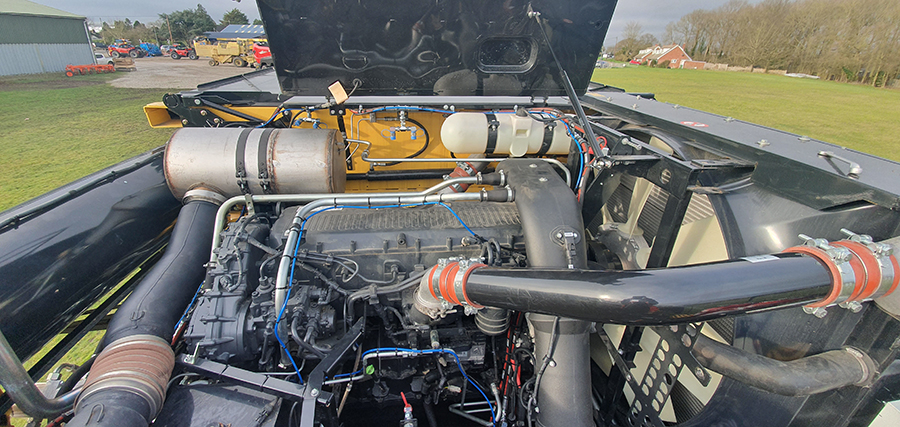Combine fire suppression kit could offer insurance discount
 ©Tim Scrivener
©Tim Scrivener Farm businesses could be set for a healthy insurance discount on high-value harvesting machines if they fit it with a fire suppression kit.
Fireward, which builds the retrofit systems, has been lobbying the big-name providers to offer financial incentives that will help reduce instances of combine fires and the number of machines being written off as a consequence.
This will be increasingly important, as some insurers are closely examining claims and increasing premiums where a previous machine has been badly damaged by fire.
See also: Bedfordshire farmer fits combine with inventive fire protection kit

The dual-agent system – which includes powder and foam retardant – can be adapted to most agricultural machines and costs start at £1,600 for a tractor and rise significantly for combines. However, there is also an annual servicing fee to consider to maintain the three-year warranty.
In the case of big farms and contracting outfits, that may be just 1% of the cost of a replacement and all but eliminates the risk of being without a combine during the harvesting season.
Raising standards
Suppression kits for agricultural machines now have to meet a globally recognised standard – P-Mark SPCR 199. It can only be achieved with a dual agent system, as reignition of a fire is controlled by a secondary dose of wet chemical foam to cool hot spots. This is particularly important for combines, as fires often reignite around the engine bay.
Fitting the kit
Installation is a two-day job and involves threading 25m of pipework around all the major components.
This includes a run of pressurised detection tubing that fractures under intense heat. Any loss of pressure initiates the release of a suppression agent – typically dry powder – which is distributed via a separate extinguishing system to eight hoses mounted in high-risk areas.
On most harvesters, the system is predominantly routed around the engine bay, where major damage tends to result in the total loss of the machine. Powder nozzles also direct suppressant down the left side of the machine to smother any flames emanating from the belts and pulleys.
Most agricultural systems are dual agent, so once the powder tanks have been emptied, a dose of wet chemical suppressant is sent down the lines.

Powder nozzles down the side of the combine
After a fire, operators simply have to rinse the machine to clean off the powder, as it is apparently far less corrosive than early-generation agents. The storage cylinders positioned at the top of the combine’s steps will need replacing, as will any burnt-through sections of the detection pipe.
Optional extras include automatic engine shut-down and a manual actuator in the cab, should the driver spot an issue early.

Detection tube and nozzles
According to Fireward, the system can also be adapted to suppress fires in electrical systems. Several insurance companies, including NFU Mutual, are now specifying auto fire suppression using a non-conductive agent on control panels for AD plants, where hard-to-predict faults can be caused by wire fatigue or overloaded circuits.
The kits have also been made mandatory by many insurers of high-value machines in the waste and recycling industry.
Combine operator tips to avoid fires
- Consider blowing the combine off with a high-pressure mobile compressor twice a day in hot conditions, ideally late afternoon and last thing in the evening.
- If you don’t blow down the machine last thing at night, at least walk around it, checking the engine bay area for any smell or sign of smouldering debris.
- Ensure you have decent-sized fire extinguishers on all combines and tractors – and make sure they have been tested.
- If possible, leave a piece of cultivation kit, such as a set of discs or plough, somewhere on each block of land you are working so a cultivated fire break can be quickly established.
- Also, if possible, leave a water source such as a sprayer, bowser or slurry tanker on the block of land you are working in.
- Have a written risk assessment and procedure, so that all staff have been trained and know what to do in the event of a fire starting, be it on a machine or in a crop.
- Remind grain trailer drivers to be constantly alert for any signs of smoke from combine, crop or stubble.
- Ensure grain trailer drivers have a working means of communication with combine drivers and others, such as two-way radios, especially in areas with poor mobile phone reception. Check the batteries are fully charged

